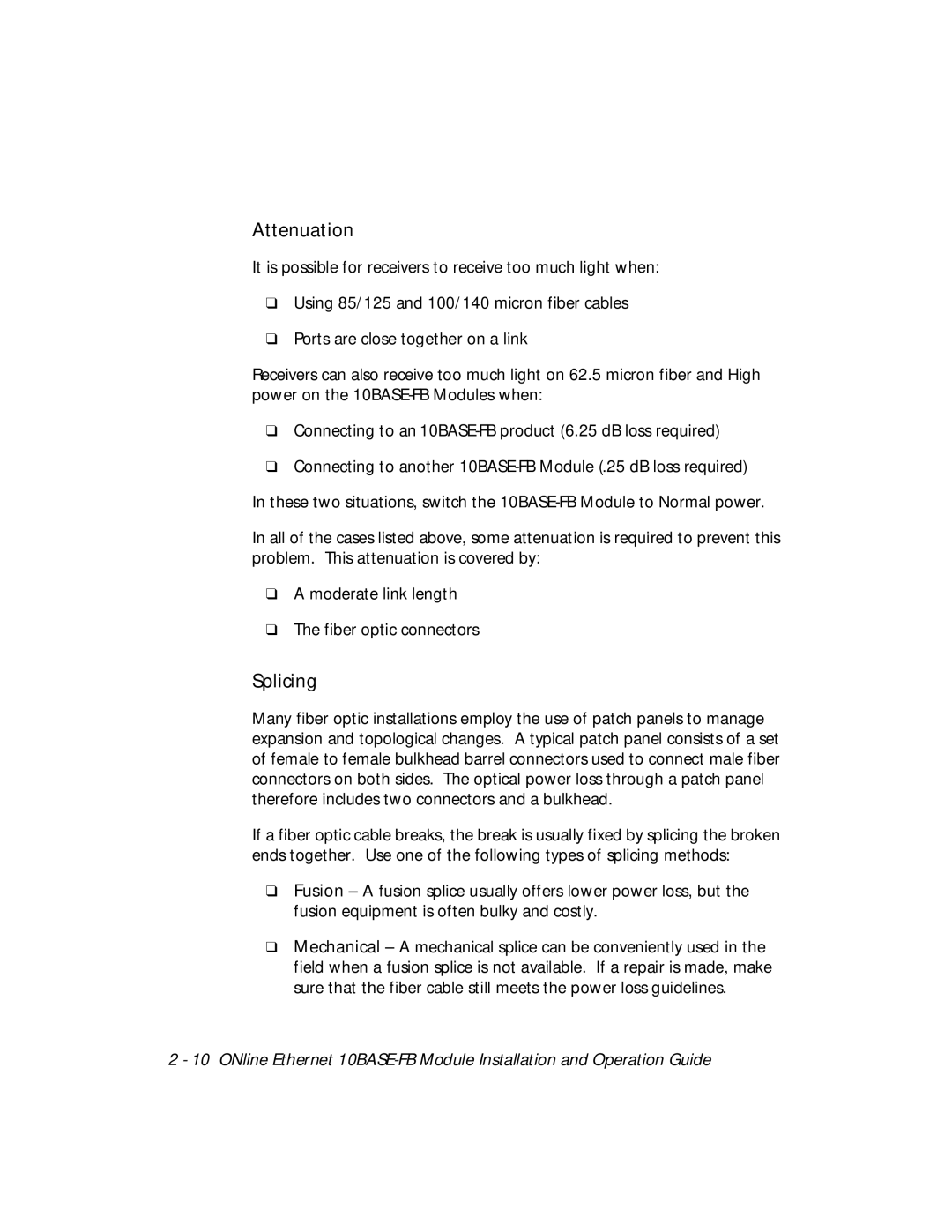Attenuation
It is possible for receivers to receive too much light when:
❑Using 85/125 and 100/140 micron fiber cables
❑Ports are close together on a link
Receivers can also receive too much light on 62.5 micron fiber and High power on the
❑Connecting to an
❑Connecting to another
In all of the cases listed above, some attenuation is required to prevent this problem. This attenuation is covered by:
❑A moderate link length
❑The fiber optic connectors
Splicing
Many fiber optic installations employ the use of patch panels to manage expansion and topological changes. A typical patch panel consists of a set of female to female bulkhead barrel connectors used to connect male fiber connectors on both sides. The optical power loss through a patch panel therefore includes two connectors and a bulkhead.
If a fiber optic cable breaks, the break is usually fixed by splicing the broken ends together. Use one of the following types of splicing methods:
❑Fusion – A fusion splice usually offers lower power loss, but the fusion equipment is often bulky and costly.
❑Mechanical – A mechanical splice can be conveniently used in the field when a fusion splice is not available. If a repair is made, make sure that the fiber cable still meets the power loss guidelines.
2 - 10 ONline Ethernet
